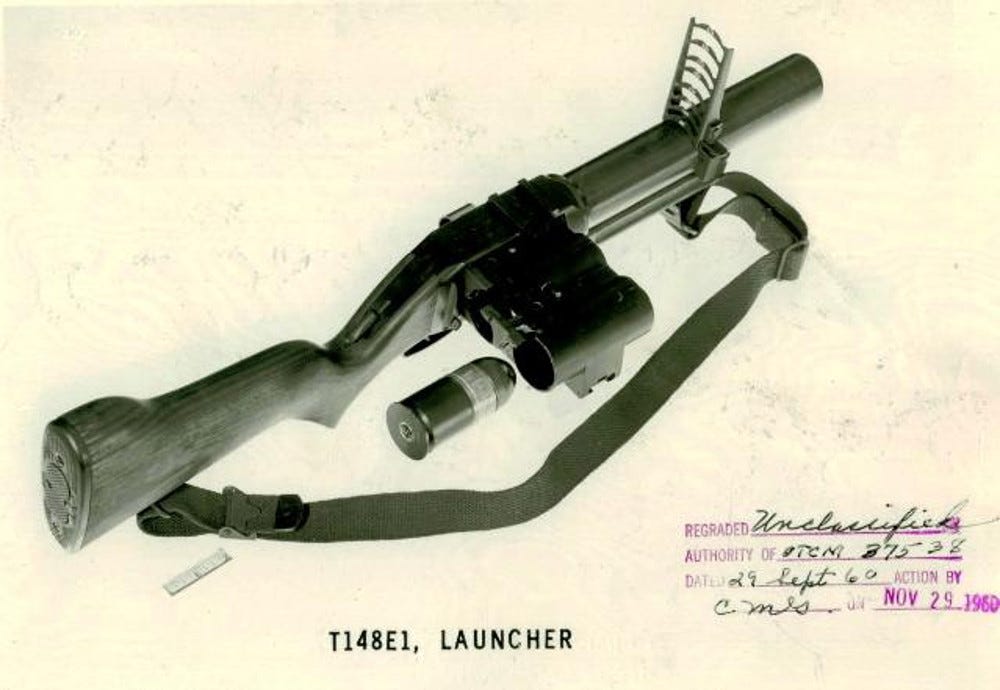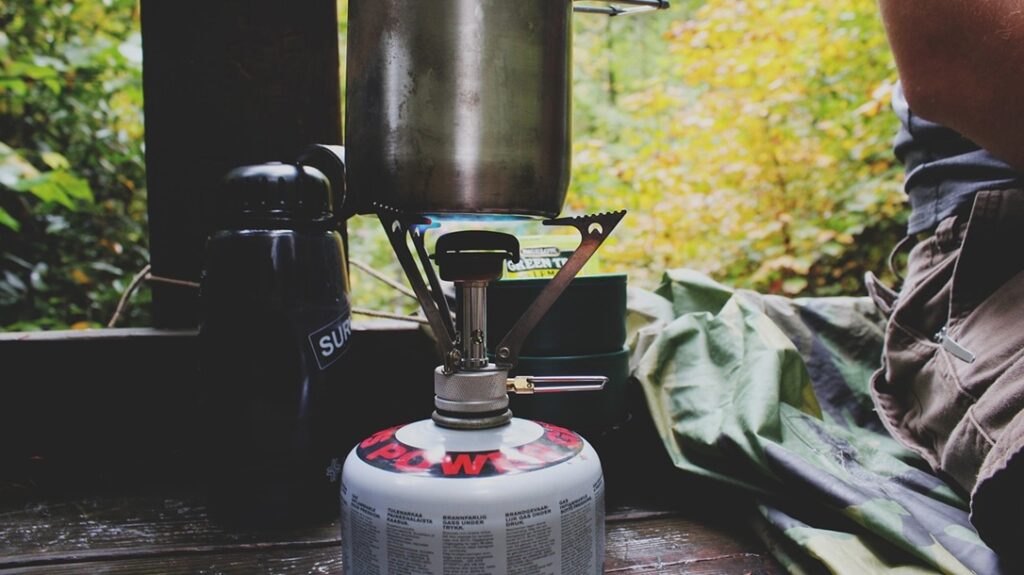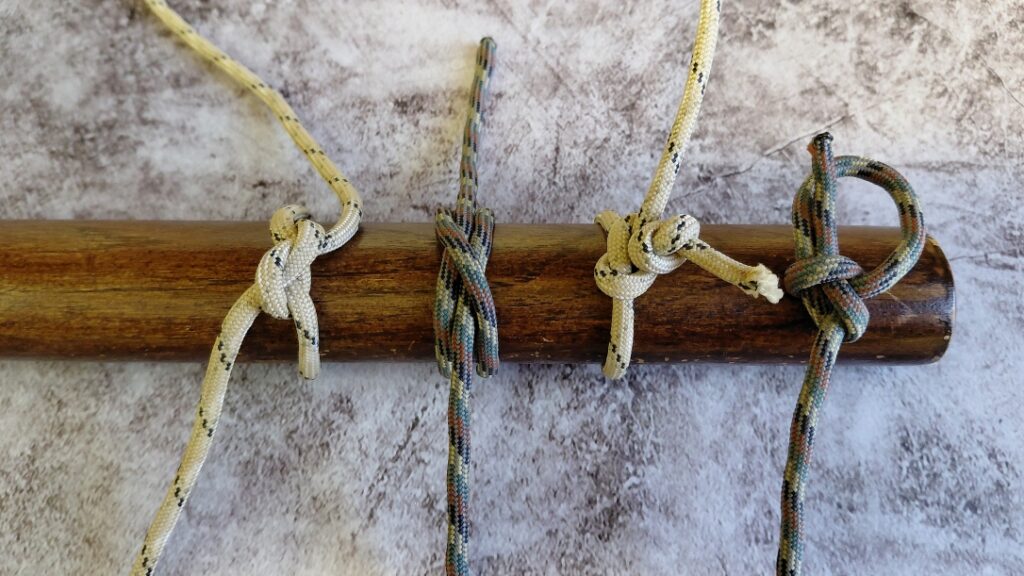Prior to the 1950s, grenade launchers, as we know them now, weren’t really a thing. The military used rifle grenades, which were quite large and powerful. They also had mortars, which acted as indirect-fire weapons. Rifle grenades and mortars were both cumbersome, and the US Army sought to find a weapon that was more portable and offered more range. This led to the invention of the 40x46mm grenade and the T148 Grenade Launcher.
The same program and idea eventually led to the M-79 and the varied experimental under-barrel grenade launchers that eventually became the M203. We don’t hear a whole lot about the T148. Interestingly enough, the T148 predates the M-79, although the M-79 is a much simpler weapon. Using a somewhat strange configuration, the T148 offered troops a repeating 40mm grenade launcher.
The T148 used a harmonica gun configuration. Harmonica guns were early attempts at creating a percussion cap repeating weapon well before the revolver. They feature a slide with chambers bored into it. The slide moves right to left or left to right, depending on the gun, and as it slides, the varied chambers align with the bore for firing purposes. The T148 used a harmonic-style clip that held three rounds and fed from left to right.
Advertisement — Continue Reading Below
History of the T148
This allowed the gunner to fire three rounds in a semi-auto fashion. As you’d imagine, being able to crank off three 40mm grenades rapidly in a fight could be a precious tool. LtCol Roy Rayle designed the Weapon and also helped develop the M14 and M60 machine guns. He joined Springfield Armory in 1953 and developed the T148 per a request by the US Army Fort Benning’s infantry board.
By 1958, they had a pilot lot of T148 grenade launchers, which were officially the T148E1 series. They featured 12-inch barrels, leaf sights, a grip safety, and a wood stock. The launcher weighed 8.41 pounds fully loaded and was 29.5 inches long. The weapon had an effective range of 400 meters and a minimum range of 50 meters to both arm and for safety’s sake.
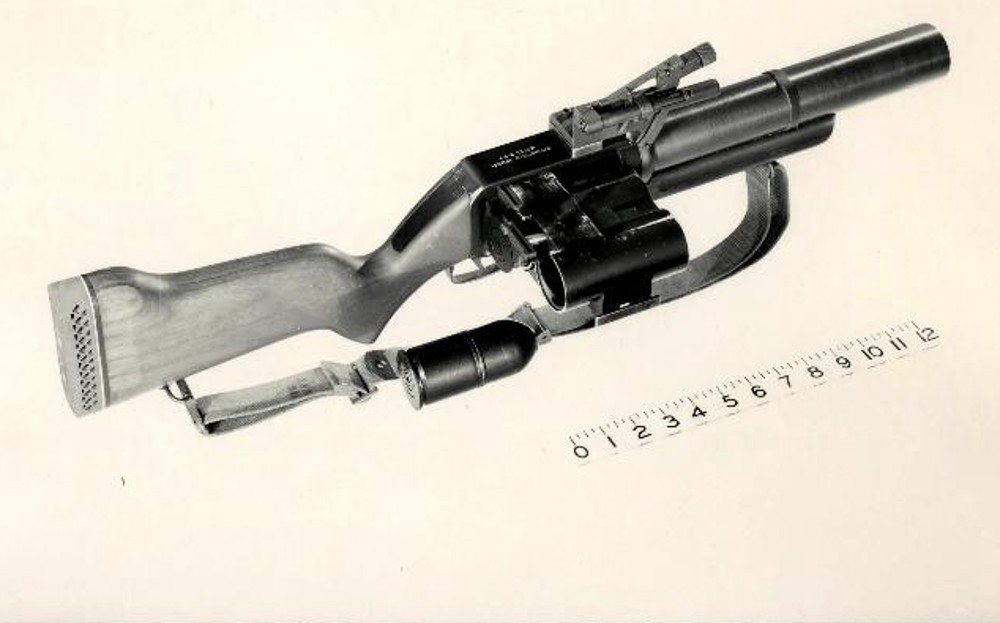
Advertisement — Continue Reading Below
It wasn’t unwieldy in terms of length and weight, but at a glance, the three-round clip hanging off the side looked destined to grab onto everything an infantryman would run into.
The weapon was tested and while it showed promise, the Army did find it to be somewhat bulky and unwieldy. Left-handed soldiers would most certainly be at a disadvantage. They continued development to create a T148E2 with small improvements. However, in 1959, the T148 program was effectively canceled.
The T148 Rides Again
Sure, the program was canceled, but Vietnam kicked off as the Cold War heated up. Asymmetric jungle warfare caused military forces to be creative and experiment with several weapon programs. When you look at some of the experimental weapons fielded, it looks like they were throwing stuff at the wall and seeing what sticks. According to most sources, about 300 T148s were produced between the E1 and E2 series.
Advertisement — Continue Reading Below

While the program was canceled, the military did send some T148 grenade launchers to Vietnam. It’s important to differentiate between the Colt XM148 under-barrel grenade launcher and the T148. Why the two share a number is beyond me.
In Vietnam the T148 got its trial by fire. It was found to be awkward and fragile, as well as clumsy. The three-round clip design was great for the first three rounds, but it was awkward to reload. The soldier would have to manually eject the spent casings by depressing an extractor release. So, loading the gun was quite slow.
Advertisement — Continue Reading Below
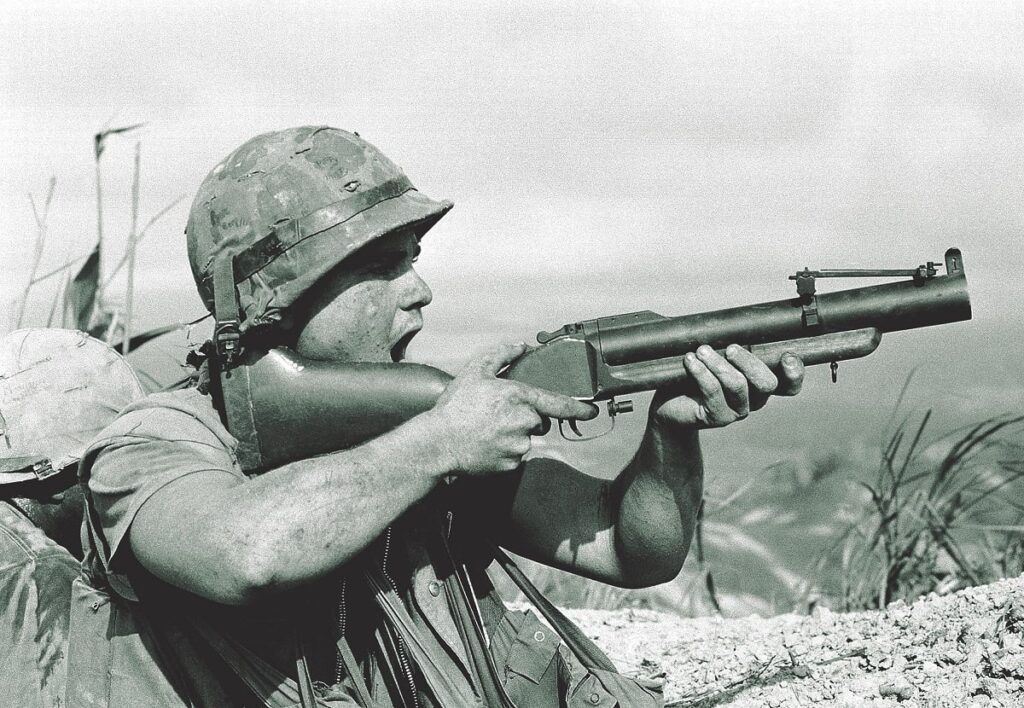
From a practical perspective, the M79 offered the same rate of fire when more than three rounds were fired. The M79 was lighter, easier to produce, less clumsy, and more reliable in the dense jungle.
The End Of Idea
The T148E1 and E2 were canceled twice, and after testing in Vietnam, the project was truly over. Four of the remaining T-148s reside in museums. The idea of a repeating grenade launcher didn’t die, and weapons like the China Lake were also tested. Even in the modern era, the repeating grenade launcher isn’t a favored weapon. Single shots still rule the roost outside of heavy machine guns. The T148 was one of many attempts for a concept that just doesn’t work well.
Advertisement — Continue Reading Below
